Skincare Product Development Flow: From Concept to Creation in the Lab
By:
bryan choong
On
16/11/2024Reading time:
0 min
Summary:
Creating a skincare product involves meticulous planning, research, and testing. The journey from an initial idea to a finished product on the shelves is complex, with several stages ensuring the product is safe, effective, and aligned with a brand’s vision. In this blog, we’ll take a closer look at the skincare product development flow, offering insight into how skincare products are developed in the lab.
1. Concept and Market Research
The first step in skincare product development is defining the concept. This involves identifying the target audience, product type, and unique selling points. At this stage, brands also analyze market trends and consumer needs, which helps refine product goals.
Defining Product Vision: This includes deciding on product type (e.g., moisturizer, serum), target skin concerns (e.g., anti-aging, acne), and key ingredients.
Conducting Market Research: Market research helps identify competitor products, popular ingredients, and unmet needs within the skincare industry, ensuring the new product stands out.
Why It’s Important: A strong concept lays the foundation for a product’s unique benefits, target audience, and overall brand alignment.
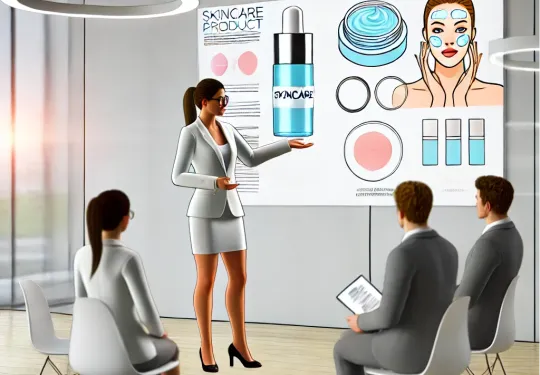
skincare product marketing brief
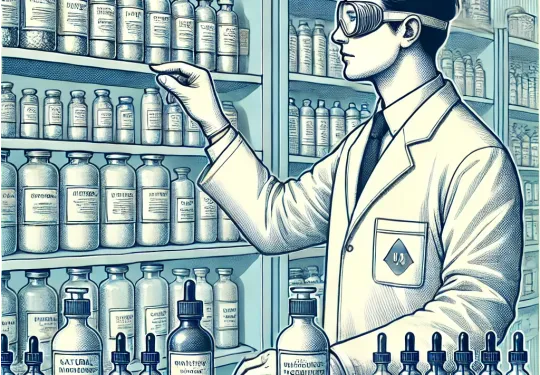
skincare ingredients sourcing
2. Ingredient Selection and Sourcing
Once the concept is defined, skincare chemists begin selecting ingredients that align with the product’s intended purpose. This involves choosing active ingredients, stabilizers, preservatives, and base materials (e.g., oils, emulsifiers).
Researching Active Ingredients: For example, ingredients like hyaluronic acid may be chosen for hydration, while retinol is selected for anti-aging properties.
Evaluating Ingredient Safety and Compatibility: Chemists ensure that selected ingredients are compatible and safe for all skin types, meeting regulatory requirements and brand standards.
Sourcing Raw Materials: Brands prioritize suppliers who provide high-quality, sustainable, or organic ingredients when needed.
Why It’s Important: Careful ingredient selection ensures the product will perform as expected and meet safety and quality standards.
3. Formulation and Prototyping
With ingredients sourced, skincare chemists begin the formulation process, which involves experimenting with ingredient ratios, textures, and scents to create a prototype.
Creating the Formula: This process often involves multiple attempts to achieve the desired texture, scent, and stability.
Adjusting Ratios and Testing Stability: Chemists work to find the right balance, ensuring the product is effective, smooth, and safe. Adjustments may be made to stabilize ingredients, prevent separation, and ensure the product doesn’t degrade over time.
Why It’s Important: The formulation and prototyping stage ensures the product has the desired consistency, stability, and effectiveness before advancing to testing.
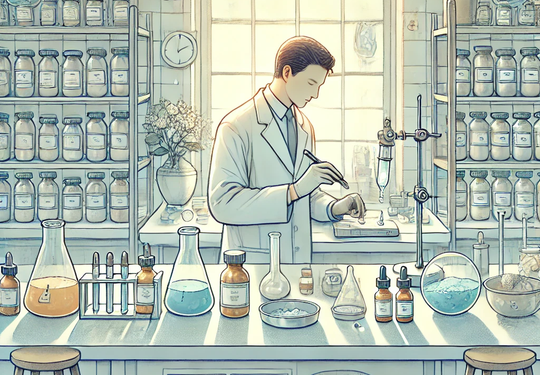
formulating skincare product in the laboratory
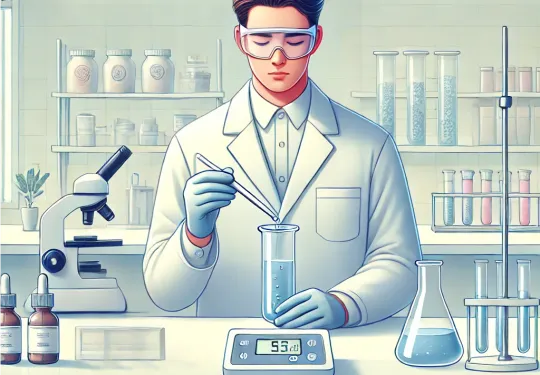
stability and compatibility testing of skincare products
4. Stability and Compatibility Testing
Before a skincare product can move forward, it must undergo stability and compatibility testing to ensure it remains safe and effective over time. This involves subjecting the product to various conditions, such as heat, humidity, and light exposure.
Testing for Stability: Stability tests are essential for ensuring the product maintains its integrity and effectiveness under different conditions.
Compatibility with Packaging: Chemists also test how the formula interacts with its packaging to prevent contamination, leakage, or ingredient degradation.
Why It’s Important: Stability and compatibility testing guarantee that the product will perform reliably for the duration of its shelf life.
5. Safety and Efficacy Testing
Safety testing is a critical step in skincare product development. In this phase, the formula undergoes various tests to ensure it is non-irritating, hypoallergenic, and safe for use.
Patch Testing and Sensitivity: These tests check for potential allergic reactions or irritations on a small group of volunteers, helping confirm the product’s suitability for sensitive skin.
Efficacy Testing: Efficacy tests verify that the product meets its intended claims, such as hydrating, reducing wrinkles, or brightening the skin.
Why It’s Important: Safety and efficacy testing ensure the product is both safe and effective for consumers, building trust in the brand.
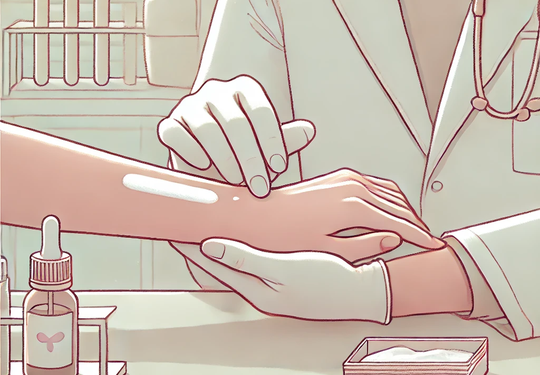
safety and efficacy testing of skincare products
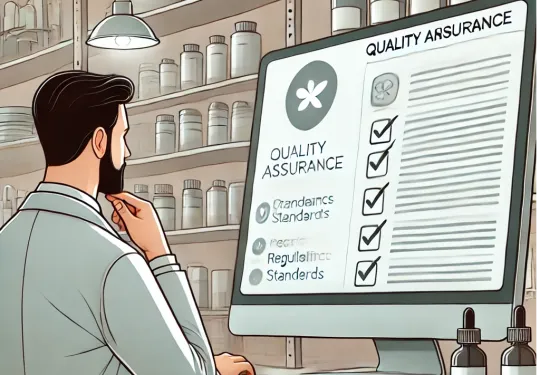
regulatory compliance check for skincare product
6. Regulatory Compliance and Labeling
Once testing is complete, the product must meet all regulatory standards before it can be marketed. This involves ensuring that ingredients and claims comply with local regulations (e.g., FDA in the U.S., EMA in Europe).
Ingredient Compliance: Brands verify that all ingredients are within safe and approved limits and comply with regulatory standards in each region where the product will be sold.
Labeling and Claims: Product labels must accurately reflect the product’s ingredients, usage instructions, and claims, such as “hypoallergenic,” “dermatologist-tested,” or “organic.”
Why It’s Important: Regulatory compliance protects consumers and ensures that the product is legally fit for sale in various markets.
7. Pilot Batch Production
After passing regulatory checks, a pilot batch is produced to test the manufacturing process on a larger scale. This helps identify any issues in consistency, packaging, or product flow that may arise during full-scale production.
Scaling the Formula: The pilot batch ensures that the formula can be reproduced accurately in larger quantities without losing quality or effectiveness.
Quality Assurance: Quality assurance teams evaluate the pilot batch to confirm that every unit meets the brand’s standards for texture, scent, and overall quality.
Why It’s Important: Pilot batch production ensures that full-scale manufacturing will run smoothly and that the product meets quality expectations.
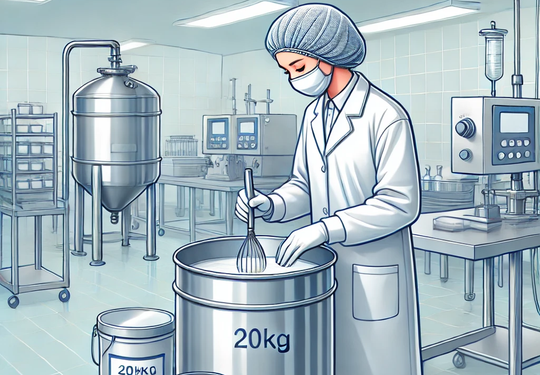
pilot batch production of skincare

commercial production of skincare product
8. Full-Scale Production and Packaging
Once the pilot batch has been approved, full-scale production begins. At this stage, the product is manufactured in large quantities, packaged, and prepared for distribution.
Quality Control Checks: Throughout production, quality control teams inspect the product to ensure consistency and quality across all units.
Packaging and Labeling: The product is filled into its final packaging, labeled, and prepared for distribution.
Why It’s Important: Full-scale production transforms the lab-tested prototype into a final product that’s ready for the market.
9. Launch and Marketing
The final step in skincare product development is launching the product and implementing a marketing strategy to reach the target audience. This involves promoting the product’s unique benefits and connecting with consumers through branding, packaging design, and advertising.
Product Launch Strategy: Brands prepare a launch strategy that includes social media campaigns, influencer partnerships, and public relations to generate awareness and excitement.
Marketing Claims: Marketing materials highlight the product’s tested benefits, such as “clinically proven hydration” or “formulated for sensitive skin.”
Why It’s Important: A successful launch strategy helps the product reach its intended audience and establishes a positive brand presence in the market.
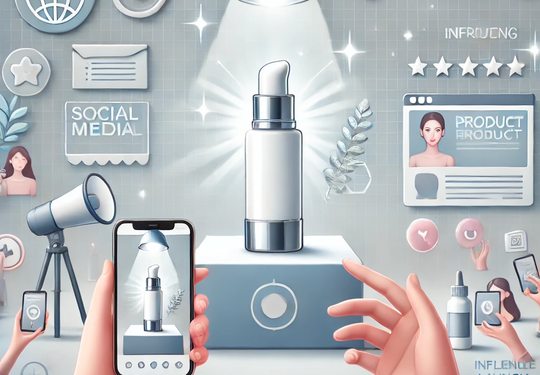
launching of skincare product
Subscribe form
This is where you want visitors to leave their email addresses so you can send them marketing info and targeted deals. To convince people to subscribe to your newsletter, try offering them something valuable that aligns with your business. This could be a special offer or early access to new products.